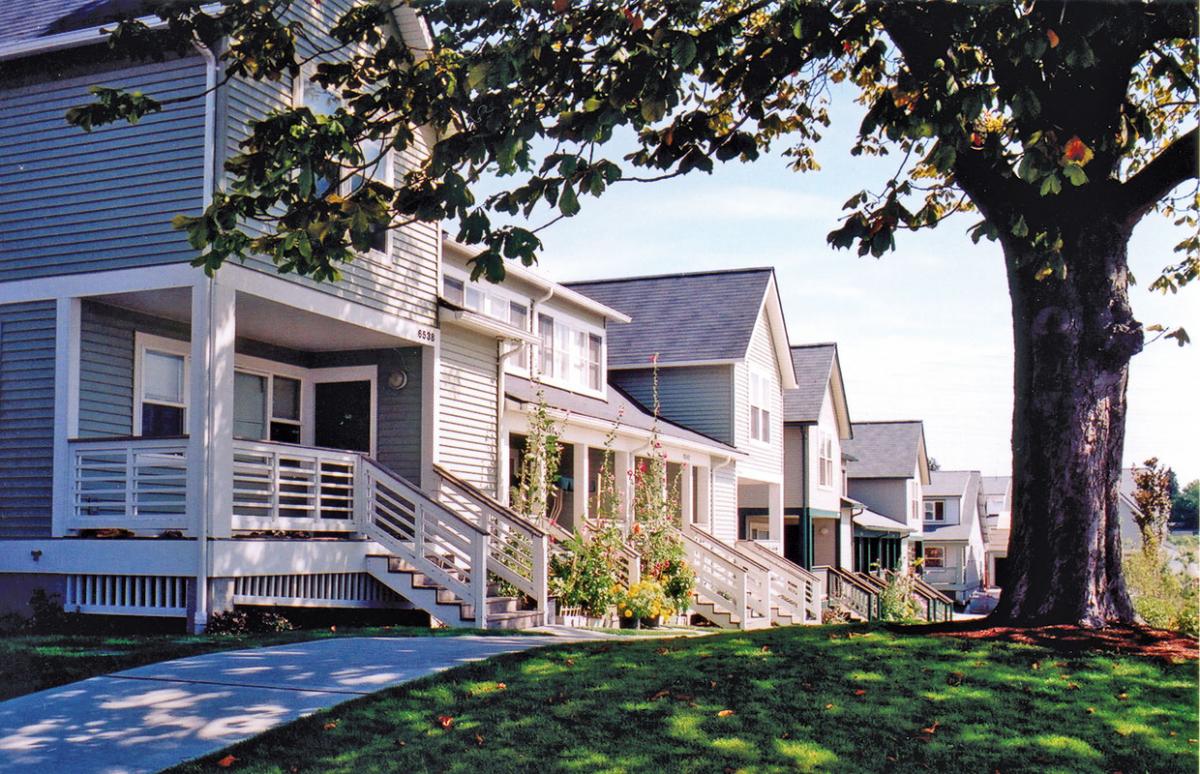Between 1997 and 2001, the Seattle Housing Authority transformed the dilapidated, low-income housing community of Holly Park into a diverse and dynamic mixed-income neighborhood—NewHolly.
Constructed in the 1940s to house World War II defense workers and converted into low-income public housing in the 1950s, the Holly Park neighborhood fell into disrepair in the late 20th century. The old Holly Park project included 871 nearly identical units in duplexes and quadplexes. Isolated from Seattle proper and all forms of public transit, Holly Park’s crime and unemployment rates rose in tandem.
In response, the United States Department of Housing and Urban Development awarded the Seattle Housing Authority a $50,000,000 grant in HOPE VI funding. HOPE VI—Housing Opportunities for People Everywhere—aimed to revitalize America’s struggling housing projects through the construction of mixed-use, mixed-income communities. In its new form and under a new name, NewHolly replaced Holly Park’s 871 units with 1,390 single-family, townhome, and apartment rental and ownership units.
Completed in 2001 and developed by Weinstein A+U Architects and Urbanists and WRT/Solomon ETC, NewHolly reserves nearly 40 percent of its units for very low-income residents (30 percent of area median income or below), 30 percent at a slightly subsidized rate for renters and buyers earning less than average income (80 percent of area median income or below), and the remaining 30 percent for rent and sale at market rate.

NewHolly, as with all other HOPE VI projects, was built with the New Urbanism central to its design. All houses were built with front porches and front yards. Built close to the sidewalk, front porches encourage human interaction and exchange. Front yards were built intentionally small to promote utilization of neighborhood parks and playgrounds strategically placed throughout NewHolly. Individual backyards were also fenced in. The low profile of the fences gives the resident a sense of privacy, security, and ownership, while also allowing for visibility, conversation, and interaction among neighbors.
The circuitous roads of Holly Park were restructured into a new grid system that reconnected NewHolly with Seattle’s street grid. New roads were narrowed as to slow thru traffic in the residential area. The NewHolly-adjacent Othello Street Light Rail station provides NewHolly residents with a regional mass transit connection.
NewHolly also offers its residents access to many community programs and services located in its three-building “neighborhood campus.” The campus contains a branch of the Seattle Public Library and a community gathering hall. The campus also hosts some South Seattle Community College classes; ESL courses; childcare, youth, family, and teen services; and job training, catering in particular to the community’s immigrant and low-income families.
NewHolly has received numerous awards from local, state, and national organizations, including the 2000 National Association of Housing and Redevelopment Officials Award of Excellence and the 2002 Congress for the New Urbanism Charter Award.
Project Details
NewHolly Seattle, Washington
Year
2001
Characteristics
Housing
Park & Open Space
Street Design
Transit-Oriented Development
Charter Award
